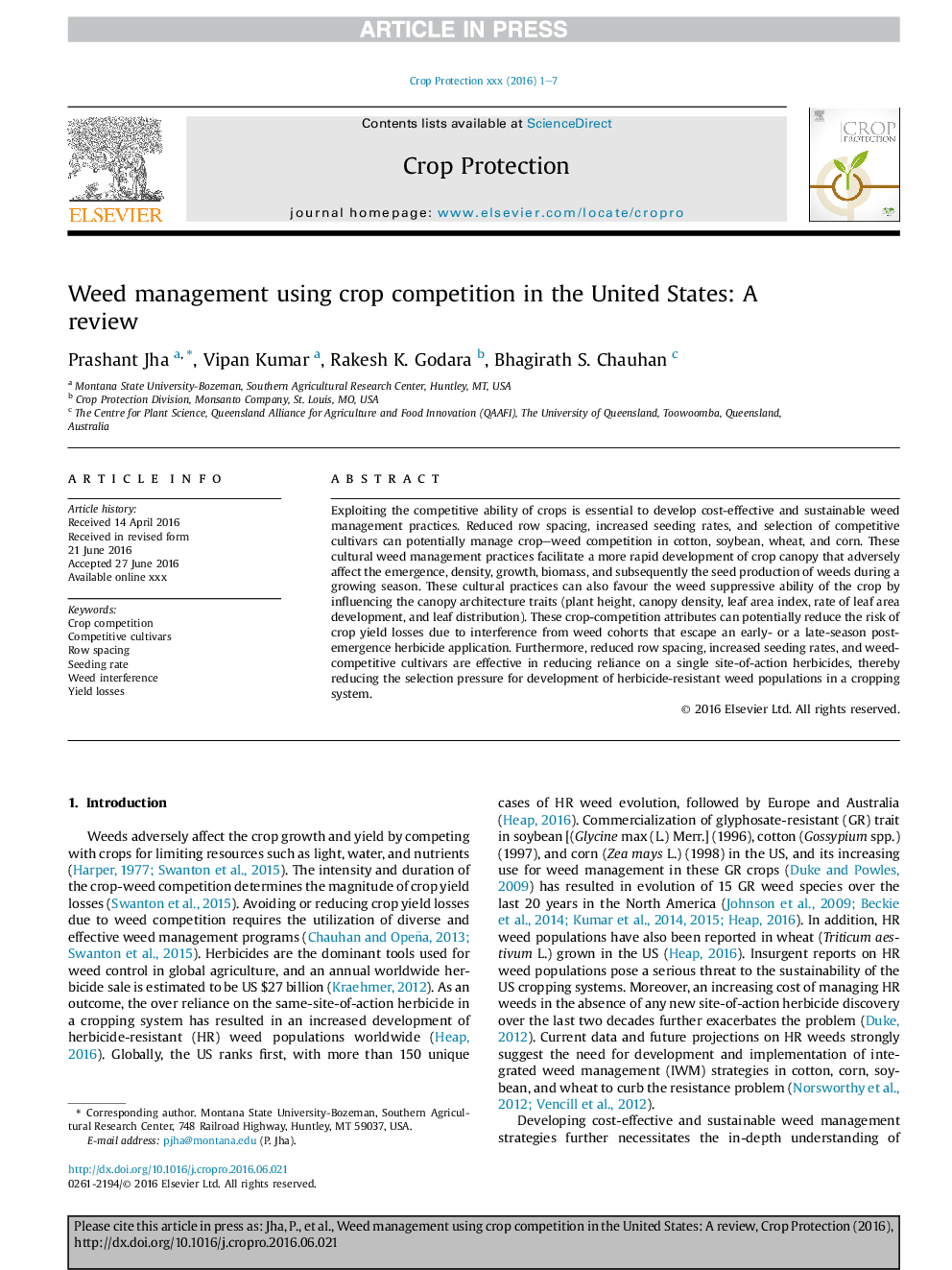| Article ID | Journal | Published Year | Pages | File Type |
|---|---|---|---|---|
| 5760839 | Crop Protection | 2017 | 7 Pages |
Abstract
Exploiting the competitive ability of crops is essential to develop cost-effective and sustainable weed management practices. Reduced row spacing, increased seeding rates, and selection of competitive cultivars can potentially manage crop-weed competition in cotton, soybean, wheat, and corn. These cultural weed management practices facilitate a more rapid development of crop canopy that adversely affect the emergence, density, growth, biomass, and subsequently the seed production of weeds during a growing season. These cultural practices can also favour the weed suppressive ability of the crop by influencing the canopy architecture traits (plant height, canopy density, leaf area index, rate of leaf area development, and leaf distribution). These crop-competition attributes can potentially reduce the risk of crop yield losses due to interference from weed cohorts that escape an early- or a late-season post-emergence herbicide application. Furthermore, reduced row spacing, increased seeding rates, and weed-competitive cultivars are effective in reducing reliance on a single site-of-action herbicides, thereby reducing the selection pressure for development of herbicide-resistant weed populations in a cropping system.
Related Topics
Life Sciences
Agricultural and Biological Sciences
Agronomy and Crop Science
Authors
Prashant Jha, Vipan Kumar, Rakesh K. Godara, Bhagirath S. Chauhan,
